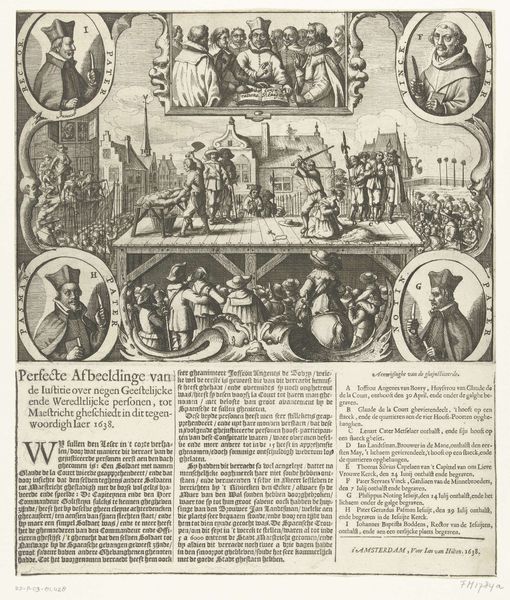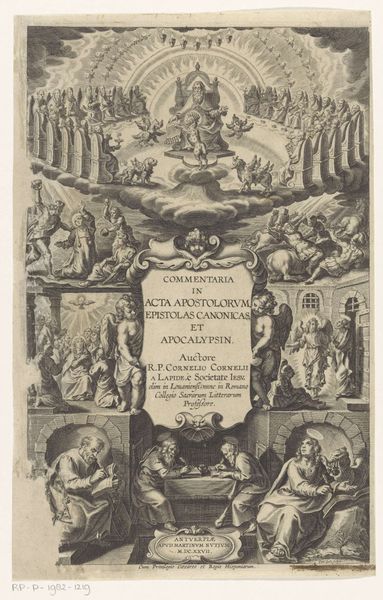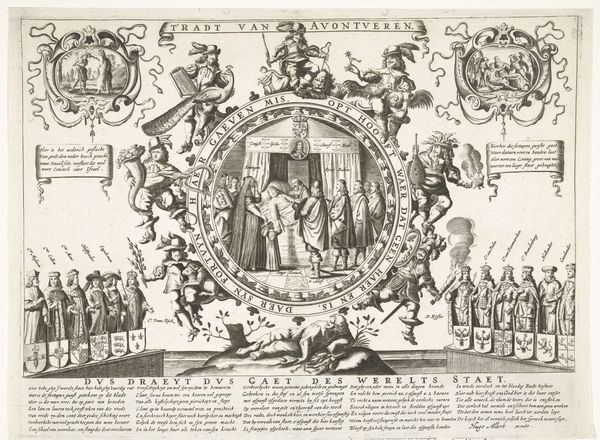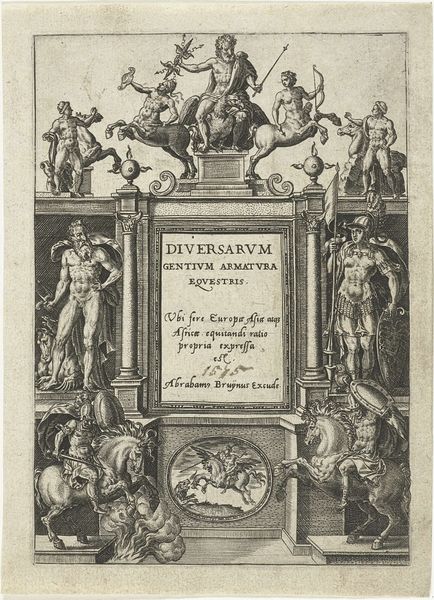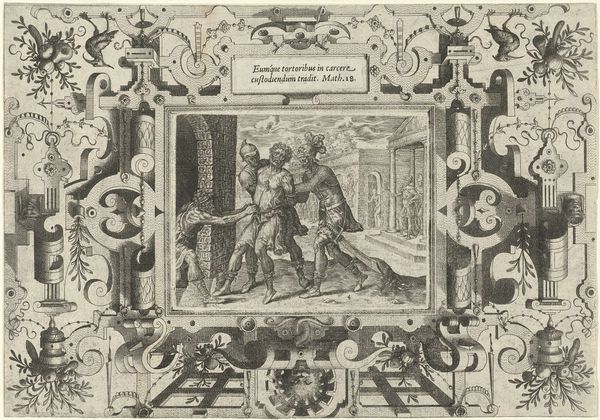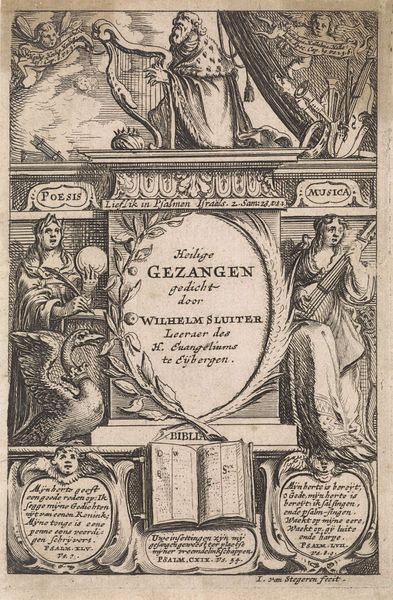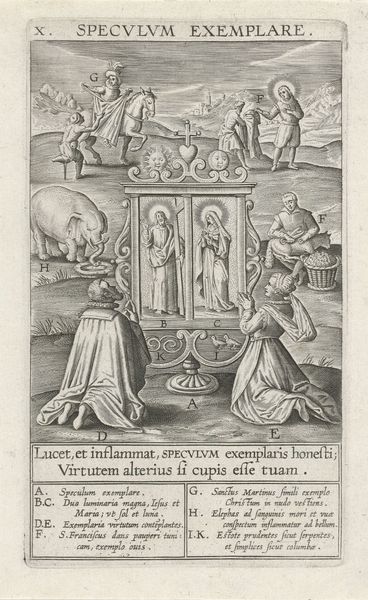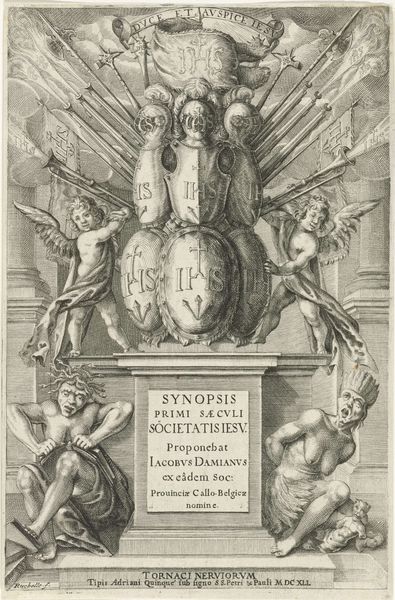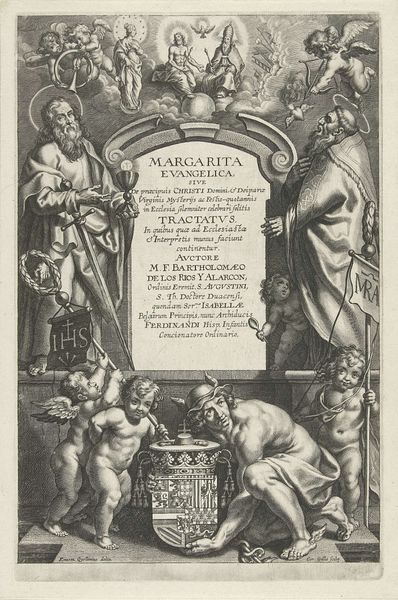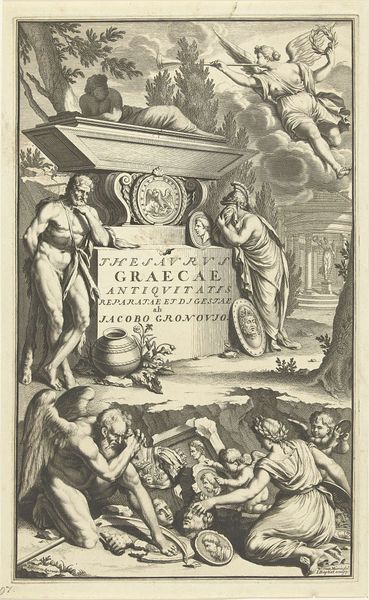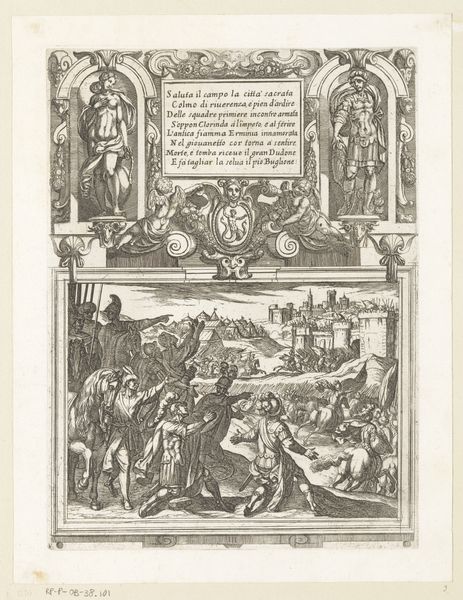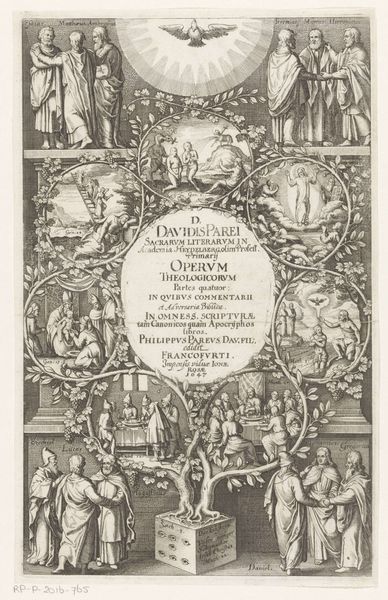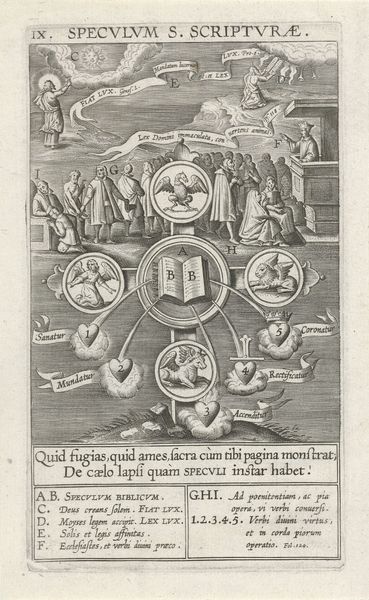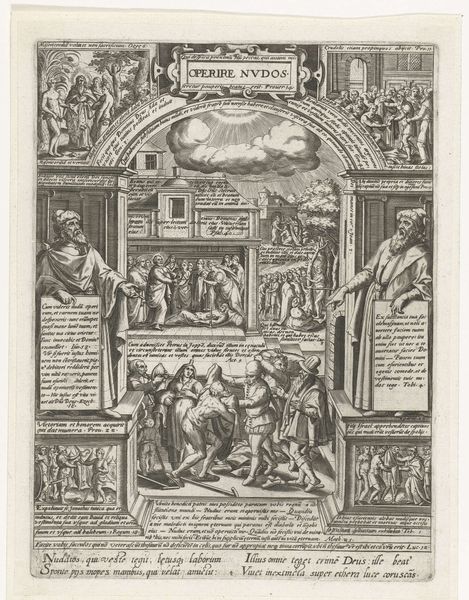
Twaalf scènes met martelaarschap van apostelen in rechthoekige omlijsting met architectuur ornamenten 1580 - 1629
0:00
0:00
graphic-art, print, engraving
#
graphic-art
#
narrative-art
# print
#
mannerism
#
figuration
#
line
#
history-painting
#
engraving
Dimensions: height 208 mm, width 132 mm
Copyright: Rijks Museum: Open Domain
Editor: Here we have an engraving called "Twelve Scenes with Martyrdom of Apostles in Rectangular Frame with Architectural Ornaments," dating roughly from 1580 to 1629, attributed to Anonymous. The sheer density of the scenes is striking. How do you approach interpreting such a visually rich composition? Curator: Formally, observe how the artist uses line to create both the figures and architectural elements. The composition relies heavily on the interplay between positive and negative space, creating a rhythm as the eye moves from one scene to another. Note, too, the framing device – how do these architectural ornaments influence your perception of the scenes within? Editor: The repetition is very clear. The figures seem almost crammed into their small boxes, all undergoing some sort of gruesome demise. But what about the central inscription? It takes up a huge amount of visual real estate in the middle of everything. Curator: Indeed. While the narrative scenes convey a specific story of sacrifice, the inscription, typeset with precision, functions as a dedication. Its presence shifts the engraving beyond mere storytelling; it transforms into a testament, a dedication to a specific patron or cause. Look at how the font is varied and embellished. This creates texture, a physical and tactile sensation, almost as though the dedication could be touched and felt. It becomes an artwork in its own right. Editor: That's a really interesting perspective – viewing the text not just for its literal meaning but also as a formal element in its design. It makes the piece far more complex than just a collection of martyrdom scenes. I see it more as an object, as opposed to solely as narrative art. Curator: Precisely. Paying close attention to formal elements—line, space, and typography—opens up avenues to engage with this anonymous work on a level that extends far beyond simply recognizing its overt religious themes. The inscription creates layers of engagement, a physical object as text.
Comments
No comments
Be the first to comment and join the conversation on the ultimate creative platform.
